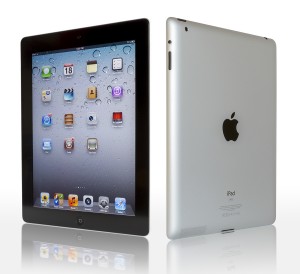As revealed at the Worldwide Developers’ Conference (WWDC), Apple Inc.’s (NASDAQ:AAPL) iOS 8 mobile platform heralds several major changes to the familiar smartphone software. One of the most noticeable is that support for the iPhone 4 is absent from iOS 8, due to the older phone’s use of the A4 core chip. The iPhone 4S variant, which uses the A5 chip, and later models continue to be supported by the new mobile OS, according to reports.
iOS 8 will still be compatible with four currently produced iPhone models, including the iPhone 4S, the iPhone 5, the iPhone 5S, and the iPhone 5C. However many different models of iPhone 6 there prove to be will also make use of the updated platform, which works with whatever CPU designers have chosen for the new device. This will likely include iPhones with different screen sizes, including some that may qualify as “phablets.”
 The iPad also runs iOS, and all current models of the popular Apple (AAPL) tablet are slated for full support from iOS 8. This lineup includes the iPad 2, the iPad with Retina display, the iPad Air, the iPad Mini, and the iPad Mini with Retina display. All of these tablets use the A5 CPU, and the models utilizing the A4 instead have been unsupported since 2012’s iOS 6.
The iPad also runs iOS, and all current models of the popular Apple (AAPL) tablet are slated for full support from iOS 8. This lineup includes the iPad 2, the iPad with Retina display, the iPad Air, the iPad Mini, and the iPad Mini with Retina display. All of these tablets use the A5 CPU, and the models utilizing the A4 instead have been unsupported since 2012’s iOS 6.
The 5th generation iPod Touch is also supported by iOS 8, giving another lease on life to part of Apple’s product range that puzzles many analysts by its continued existence.
At the same time, Apple’s iOS and Mac platforms appear to be shifting somewhat in the direction of Windows-style design, highlighted by much-enhanced compatibility between the two systems. Additionally, iPhones running iOS 8 should offer considerably more customization than previous models, rather than expecting the user to accept the system and interface exactly as-is.
Some of the options include being able to rearrange the order of items appearing in the Today view of the iPhone’s Notification Center, delete items from this view, or add third party widgets to it to put the apps and functions an individual user prefers within his or her easy reach. Built in and third party apps can be placed in a different order, hidden, and otherwise reorganized to best suit the user’s individual needs and tastes.
Together, all these changes represent an iOS 8 which will be highly customizable by Apple (AAPL) standards and support a varied selection of devices.



